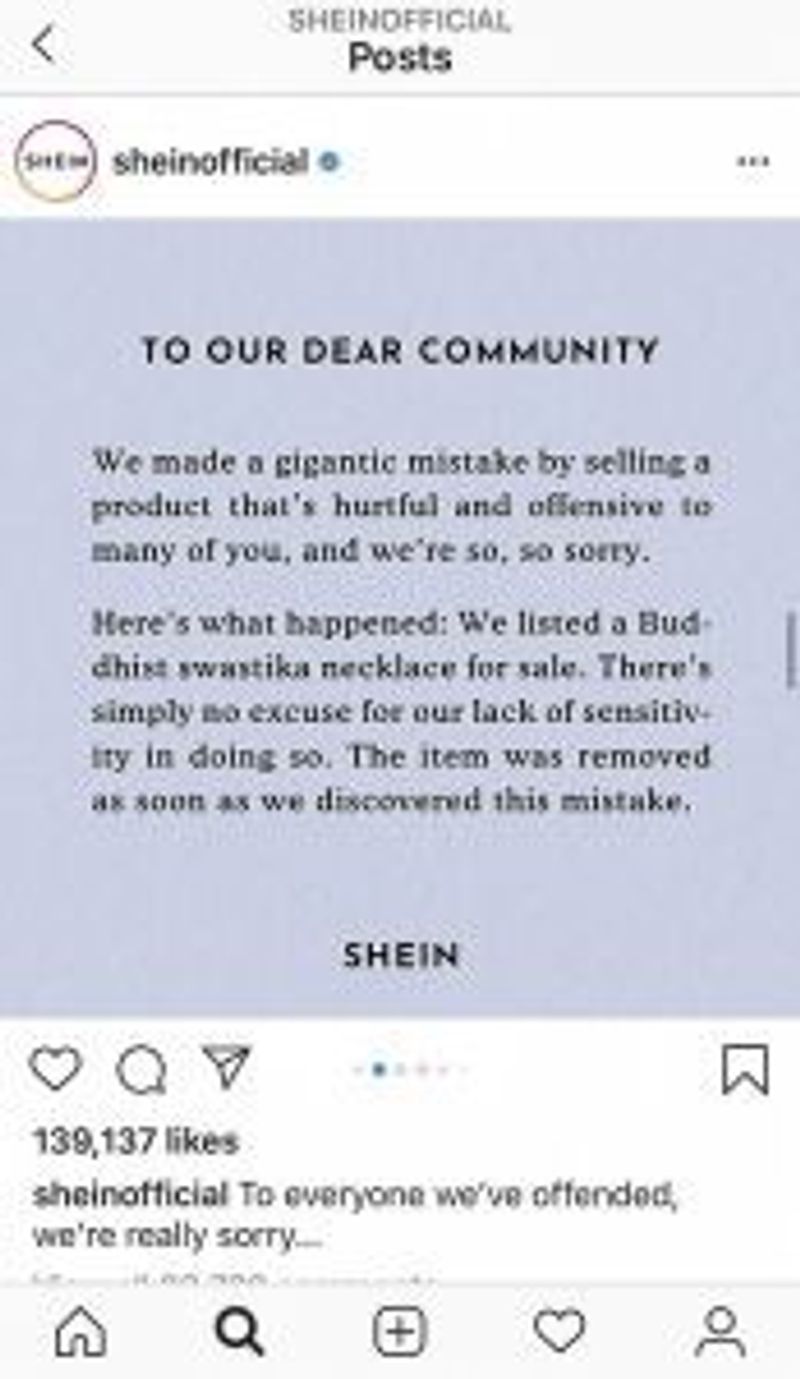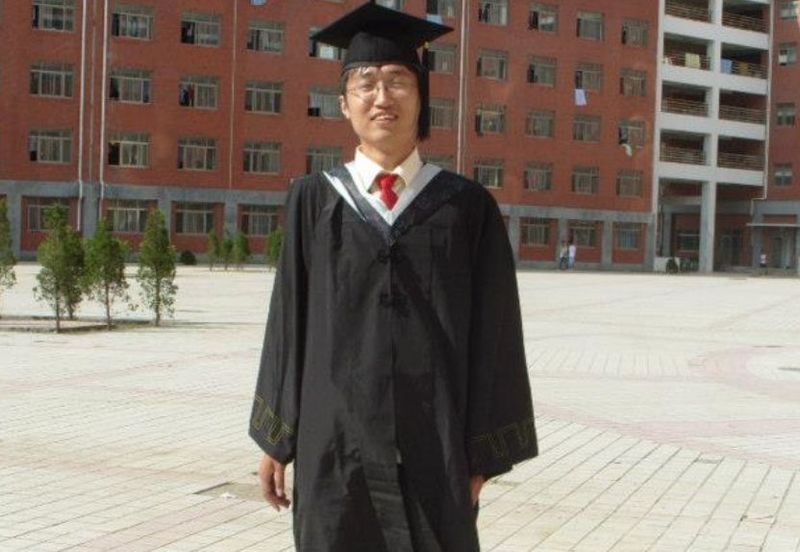icon
password
Multi-select
tags
ID
type
status
slug
summary
category
date
Author
URL
While everyone is crazy about the clothes Shein sells, let's try to reduce the company's mystery in the English-speaking world.
As a result of the COVID-19 pandemic, the global clothing industry has been impacted.
It’s easy to understand, on one hand, we don’t seem to be able to go out anymore, so we don’t need to buy expensive clothes anymore. On the other hand, we don’t seem to be able to go out anymore, so we can’t go to the mall to buy clothes anymore.
But here is a surprise. A brand called Shein became a favorite of many consumers, influencers and even professionals during the pandemic.
Its price is cheap, the style is diverse, and the quality is good, more importantly, it is an online brand. You no longer have to take the risk of being infected to go to the store to buy clothes.
Soon, it was discovered that Shein was a brand from China, so like all brands from China, many media in the English-speaking world blamed the company in many ways. That’s why we want to write this article. We want to try to reduce the company’s mystery in the English-speaking world, rather than fighting back against these questions.
But to be honest, it’s not an easy task.
There are two basic conditions we would like to disclose to you. Although Shein is headquartered in China, the company is only engaged in the export business. In other words, most Chinese consumers, have never heard of the brand, and they do not have any reasonable channels to buy products from the brand.
What’s more, since the company rarely sells goods in China, it rarely publishes news in the Chinese-language media.
To put it simply, Shein is as mysterious in the Chinese world as it is in the English world.
However, we did find some reports about Shein, which mentioned some information that did not exist in the English reports about the company.
Special advantages of Shein
I don’t want to advertise for Shein, but since most English readers must be most concerned about why this Chinese brand can quickly dominate the European and American markets, I still have to write about the company’s special advantages. In many English-language media reports about Shein, the company’s success is attributed to the sale of low-cost, low-quality goods.
Oh, come on, it’s 2021, and that’s out of date. There are countless Chinese merchants trying to sell low-quality and low-price goods to European and American markets, but few brands are really successful.
Therefore, although the price of Shein is indeed very cheap, it must have some special advantages. I find two points in the Chinese media.
Make the design short
In many Chinese media reports, the secret of Shein’s success is speed.
According to Chinese media reports, Shein launched an average of 10000 new products per month in 2019, with more than 150,000 items on the shelves in the whole year. The number of new goods on Shein’s list every two months is equal to that of Zara for the whole year.
And the rate is getting faster during the outbreak. According to Chinese fashion media Luxe, Shein launched 15280 new products (including those that sold out) in the week from January 13 to January 19, 2021.
In a way, this is a strategy of “using algorithms instead of design”, which we described in a report on miniso, another Chinese retail brand:
This strategy greatly reduces the time of “hesitation” in the design process. Instead of speculating in the office whether consumers prefer style A or style B, it is better to produce 100 A-style and 100 B-style at the same time. See which style can be sold out in a shorter time.
This is known in the Internet industry as AB Test, is a classic way to improve the product experience.
But China’s manufacturing brands are widely introducing such a mechanism to the production of physical goods.

Before Shein, no clothing brand in the world could provide consumers with 1000 new styles every day.
In the view of the Chinese media, this mechanism is difficult to replicate for its competitors Zara and H&M, because few other countries in the world have a Chinese-style industrial concentration in the light industrial sector. In some provinces in southern China, you may see an area that stretches for hundreds of kilometers, where all the people who live in it are engaged in the production of shoes. Or a hat, or clothes, or a wig.
This industrial concentration makes the model of Shein and Miniso successful, and they can find local suppliers more quickly to meet the needs of the market.
Earlier, media revealed that SHEIN asked its suppliers not to take more than 15 days from receiving an order to the clothes that appeared in Shine’s Chinese warehouse. In 2020, this time is further reduced to 11 days, note that this is the slowest case, in most cases only 7-8 days.
In Zara’s production center in Spain, the minimum production volume seems to be 500 pieces. This means that for every 1000 pieces of clothing produced, Zara can only do the “AB Test” mentioned above once. But the minimum production batch in SHEIN’s Chinese supply chain is 100 pieces, which means there can be five AB Test for every 1000 pieces order.
Through this, Shein can continue to launch products that consumers like more quickly and discard unpopular designs.
In the field of fast fashion, fast is sometimes the key to winning everything.
You are reading Panda!Yoo
A blog about modern Chinese culture and consumption trends. If you are interested in Chinese food, drinks, games, movies, novels, dramas, please follow us.
Join 1,565 other subscribers
Keep the brand for a long
Since China won the title of “factory of the world”, the country has produced most of the world’s clothes.
Every year, hundreds of millions of Chinese-made clothing are sold around the world through e-commerce platforms such as Amazon. But why is it that only Shein has achieved such a result in Europe and the United States?
In fact, this is because Shein is one of the few Chinese clothing brands trying to maintain its long-term reputation outside China.
Although some English-language online celebrities and media have questioned that Shein may have some shortcomings in environmental protection and labor rights, this is because Shein has taken the initiative to provide a “target” for these critics.
There is an obvious fact that many foreign and Chinese consumers have not noticed: many “made in China” goods sold on Amazon and AliExpress in Europe and the United States are not sold in the Chinese market.
It is not because these goods are of higher quality and the Chinese market cannot afford the price. On the contrary, it is because the quality of these goods is not good enough to sell in the Chinese market, so they sell overseas through the Internet at lower prices.
Most of these goods can not find any brand logo, or can only find fictional manufacturers, selling these goods in China may be prosecuted or held criminally liable.
Shein is one of the Chinese brands that have not adopted this strategy in the clothing sector, although it is not sold in the Chinese mainland market either. But when it is criticized overseas, it does not close its brand and re-register a trademark and Amazon account, like many other Chinese merchants facing overseas markets do.
Shein was founded in 2008, and after several early name changes (we’ll talk about later), it established the current brand name, and it never tried to disappear from the English-speaking world by changing its name.

In July 2020, Shein sold a pendant that is said to be inspired by Buddhism on its website, but it is considered to represent the Nazis in Europe and the United States. Shein quickly took the product off the shelves and sincerely apologized on its Instagram.
Since the swastika style is not taboo in most parts of Asia, in fact, many Chinese exporters are punished every year for accidentally posting products containing the symbol on Amazon. When faced with criticism from consumers and fines from Amazon, most of them choose to re-register a company and restart their business.
To put it more simply: when other Chinese foreign trade companies just want to do a short-term business, Shein is serious about building a brand.
Here’s a tip for asking whether a Chinese brand is reliable. If you look up a Chinese product on Google and you only get the most recent year’s search results, no matter how highly these pages think of the brand, the brand is likely to be untrustworthy.
Search Google for SHEIN, and you will see countless reports and influencers have mentioned it. There is a lot of praise for it, as well as criticism of it, as well as its response to criticism.
On the contrary, the result is credible.
The Story of Shein’s Entrepreneurship
Entrepreneurial stories about Shein are rare even on the media in China. Like Genki Forest, the company’s founders rarely give interviews.
But through some early reports about the company, we still cobbled together the startup story of the company.

Chris Xu graduation photo via here
The founder of Shein is Xu Yangtian( Chris Xu), born in 1984 in Shandong Province, China. In 2007, he graduated from Qingdao University of Science and Technology. Shortly after graduation, he came to work in an online marketing company in Nanjing for a job related to SEO.
SEO (Search Engine Optimization) is an “ancient” Internet technology that focuses on how to put your site higher in search results.
In this job, he seems to realize the commercial value of selling Chinese goods to overseas markets through the Internet.
In 2008, he left the online marketing company and founded ZZKKO, the predecessor of Shein, in Nanjing. In the early days, the company tried many different site names, because, in the SEO field, you always need to make a variety of attempts to find the best combination.
Eventually, the name of the site was identified as SheInSide, which was further reduced to Shein a few years later. At first, the site did not sell women’s daily clothes, only wedding dresses. During that time, it competed with Lightinthebox in the same field.
Shein did not establish its own supply chain before 2014. At that time, Shein adopted a similar model to other shoppers. Their team would find some products that had the potential to be popular in the European and American markets in China’s clothing wholesale market, take photos, put them on their website, and when there were enough orders, they bought a batch of clothes from wholesalers and then mailed them to overseas consumers.
The SEO effect of Shein is so good that it makes their business quickly enter a bottleneck period-because their sales volume is too high, they have no time to launch new products, and the old products have been snapped up by consumers.
At this time, Shein actually has two choices. One is to transform itself into an “online mall” that allows any Chinese merchant to enter. Simply put, turn into an Amazon or Aliexpress for women’s clothing.
For Xu, who is proficient in SEO technology and Internet operation, this seems to be a natural choice. However, he did not do so.
Because once you choose this path, to some extent, it means “giving up your brand advantage.” People don’t think that a certain product is of high quality just because it is sold on Amazon. On the contrary, Chinese products on AliExpress and Amazon have become synonymous with low-quality goods to some extent. Shein doesn’t want this to happen to itself.
Shein began to establish its own supply chain system in 2014. It officially changed from an Internet shopper to a women’s clothing brand. This is a very bold decision because designing styles, producing clothes, and ensuring quality are not as simple as launching a website and entering product information on it.
Xu came to Guangzhou, Guangdong Province, and set up the company’s first design team. If you know something about the economic situation of different regions in China, you will know that Guangzhou is one of the regions with a relatively concentrated garment industry chain in China.
By 2016, Shein had built an 800-person clothing design team. They began to take the initiative to place orders with clothing factories and sell clothes that belong to their own brands.
Having its own clothing design team and supply chain, Shein began to apply the “algorithm” to the clothing design field as mentioned above.
Shein is a big customer of Google in China. It uses Google Trends Finder to find hot word search volume and rising trends in different countries, such as what colors, fabrics, and styles will be popular. For example, it accurately predicted the 2018 summer of lace in the United States and cotton in India. The “predicted the future” through SEO, which made them one step faster than all other fast fashion brands.
After that, you will know that due to the COVID-19 pandemic, when consumers in Europe and the United States no longer go out to buy clothes, Shein has achieved large-scale growth.
In fact, the growth of Shein’s business has also attracted the attention of some local media and commentators in China, which has led to more Chinese reports about Shein. But so far, Shein’s founders and current executives have not been interviewed by Chinese media.
Therefore, there are still many mysteries about Shein’s business story, and we may have a chance to learn about it in the very short future.
If you are also curious about some aspects of the company, you can communicate with me on Twitter and I will see if I can find relevant information to join the next article.
I wrote this article with the following Chinese materials as a reference:
- Author:NotionNext
- URL:https://pandayoo.com/2021/02/18/an-incomplete-business-story-about-shein
- Copyright:All articles in this blog, except for special statements, adopt BY-NC-SA agreement. Please indicate the source!